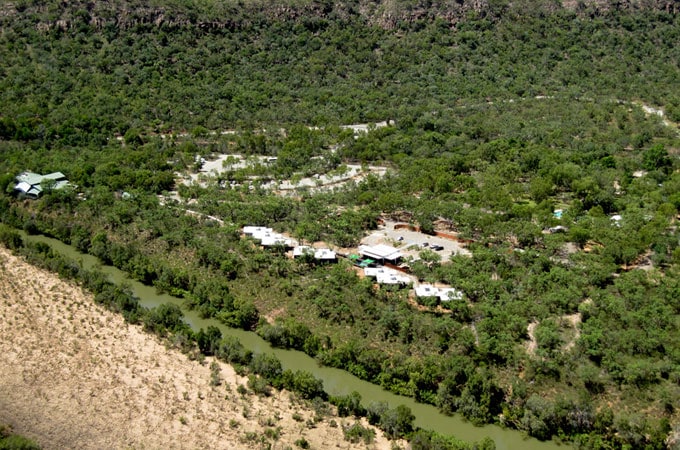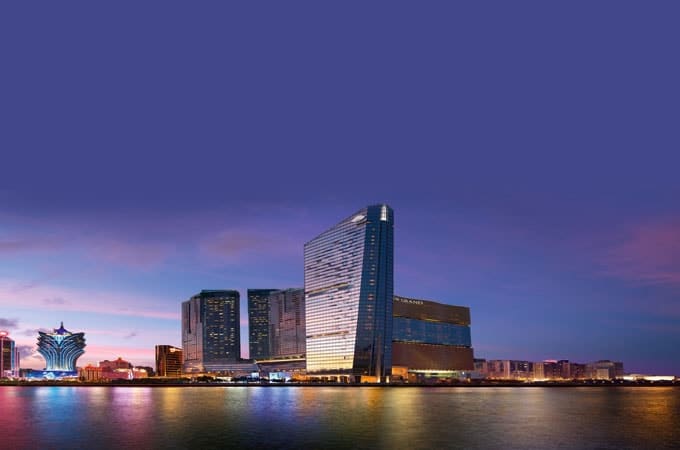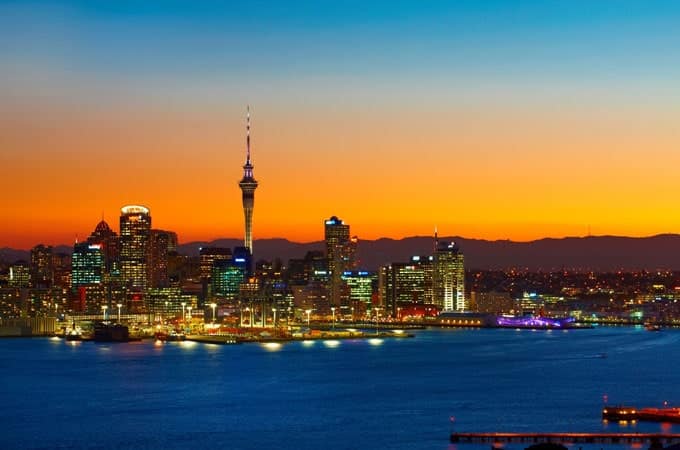For travellers who love visiting historic sites on vacation, China is a treasure trove of famous landmarks. Walking along the Great Wall or standing among the Terracotta Warriors is a bucket-list adventure, with each landmark telling its own unforgettable story of cultural heritage.
Natural wonders like Tiger Leaping Gorge offer breathtaking adventures, while modern landmarks such as the Oriental Pearl TV Tower and CCTV Headquarters showcase China’s dynamic progress.
Our comprehensive guide to China’s Famous Landmarks covers the best of China’s millennia-old history and stunning architecture. Together, these landmarks form a collage that fascinates, educates, and invites the world to explore China’s historical depths and innovative heights.
The Great Wall of China

The Great Wall of China, spanning rugged mountains and vast expanses, epitomises the strength and ingenuity of ancient Chinese civilisation. Initially constructed by various states during the Spring and Autumn period, it evolved under Qin Shi Huang into the world’s longest military structure.
Initially a defence against nomadic invaders, it later facilitated trade along the Silk Road and served as a signalling network. Designated as a UNESCO World Heritage Site in 1987, the Great Wall symbolises China’s historical endurance and collective achievement. Each brick tells a tale of unity and determination, drawing global travellers to witness its grandeur amidst diverse landscapes first-hand.
The Forbidden City (Beijing)

Nestled in the heart of Beijing, the Forbidden City embodies China’s imperial history. For over 500 years, it was the residence of 24 Ming and Qing dynasty emperors.
The Forbidden City exemplifies traditional Chinese palace architecture, spanning 720,000 square metres and featuring nearly 980 buildings. Its harmonious layout adheres to celestial principles, with yellow roofs symbolising imperial authority and a walled structure ensuring seclusion. Renowned for meticulous craftsmanship in woodworking, stone carving, and metalwork, it captivates visitors with its cultural richness and regal majesty.
Designated a UNESCO World Heritage Site, the Forbidden City stands as an enduring symbol of China’s rich heritage and continues to intrigue with its architectural splendour.
Related article: Top 5 Icons to See on Your Holiday to China
Tiger Leaping Gorge (Yunnan Province)

Located in Yunnan Province, Tiger Leaping Gorge showcases China’s natural beauty on a grand scale. Carved by the Jinsha River, a tributary of the Yangtze, it stretches over 15 kilometres and descends approximately 3,790 metres, ranking among the world’s deepest gorges.
Towering cliffs and verdant terraced slopes surround the roaring river, creating a dramatic panorama cherished for its ecological and cultural significance. According to local legend, a tiger leapt across its narrowest point, lending the gorge its evocative name and mythical allure. Today, it entices adventurers with challenging trekking routes, offering glimpses into local Naxi culture and unrivalled vistas of Jade Dragon Snow Mountain and Haba Snow Mountain.
The Temple of Heaven (Beijing)

In the heart of Beijing lies the Temple of Heaven, a symbol of ancient Chinese spiritual traditions and architectural brilliance. Initially constructed as a sacred venue for imperial ceremonies to secure agricultural abundance, it showcases the Ming Dynasty’s craftsmanship.
The Hall of Prayer for Good Harvests, its focal point, is a masterpiece crafted entirely without nails, featuring a triple-gabled roof painted in vivid shades of azure, crimson, and gold. These colours signify harmony in the cosmos and the authority of the imperial court. Encircled by columns symbolising the seasons, the temple invites visitors to immerse themselves in China’s reverence for the heavens and its profound artistic heritage.
Terracotta Warriors (Xi’an)

Discovered in 1974 near Xi’an, the Terracotta Warriors are a marvel of ancient Chinese craftsmanship and military strategy. Buried over 2,000 years ago with Qin Shi Huangdi, China’s first emperor, this vast army of life-sized clay soldiers and horses reflects the Qin Dynasty’s artistic sophistication and military organisation.
Excavations have unveiled thousands of meticulously detailed figures arranged in battle formation, providing invaluable insights into ancient Chinese military tactics and imperial customs. The site continues to captivate with its historical significance, offering a poignant glimpse into China’s imperial past and the enduring legacy of its first emperor.
The Bund (Shanghai)

Shanghai’s iconic Bund traces China’s transformation from a colonial port to a global financial hub. Stretching along the Huangpu River, it juxtaposes historic European architecture with modern skyscrapers that define Shanghai’s skyline.
Notable landmarks include the neoclassical Customs House and the Art Deco Peace Hotel, showcasing Shanghai’s architectural diversity and cultural vibrancy. A popular destination for locals and tourists alike, the Bund offers panoramic views of Shanghai’s bustling cityscape, embodying the city’s dynamic evolution and international allure.
Related article: Explore Shanghai with this couple’s travel guide
Yellow Mountain (Huangshan)

Huangshan, also known as Yellow Mountain, fascinates visitors with its towering granite peaks, winding pine trees, and enchanting sea of clouds. Situated in Anhui Province, this breathtaking landscape has long been a muse for Chinese artists and poets.
Hiking trails wind through its dramatic landscape, offering vistas of iconic landmarks like the Celestial Capital Peak and the Bright Summit. Huangshan’s serene and ever-changing scenery evokes a sense of wonder and tranquillity, embodying China’s natural splendour and cultural significance in literature and art.
West Lake (Hangzhou)

West Lake in Hangzhou is revered for its scenic beauty. Designated as a UNESCO World Heritage site, this picturesque lake has been an enduring muse for poets, scholars, and artists across centuries. Its tranquil waters create reflective vistas that mirror pagodas, meticulously landscaped gardens, and ancient causeways, all harmoniously integrated into its serene environment.
Along its shores, iconic landmarks such as the Leifeng Pagoda and Lingyin Temple testify to Hangzhou’s rich cultural heritage and spiritual traditions. These architectural marvels enhance the lake’s beauty and offer visitors glimpses into China’s historical depth and artistic prowess.
Boat cruises on West Lake offer panoramic views of traditional pavilions reflected in calm waters, inviting contemplation and appreciation of natural and human-made wonder.
Summer Palace (Beijing)

The Summer Palace in Beijing is an expansive imperial garden reflecting China’s landscape architecture and royal leisure. Built during the Qing Dynasty, this UNESCO site encompasses pavilions, halls, and gardens surrounding Kunming Lake. A retreat from the summer heat, it served as a cultural hub for emperors, blending natural scenery with architectural splendour.
Today, visitors can explore Longevity Hill, the Marble Boat, and the Hall of Benevolence and Longevity, gaining insights into imperial life and artistic achievements. The Summer Palace’s historical significance and serene beauty make it a cherished landmark in Beijing, offering a glimpse into China’s imperial past and cultural heritage.
Tianmen Mountain (Hunan Province)

Tianmen Mountain, located in Tianmen Mountain National Park within Zhangjiajie, in the northwestern part of Hunan Province, is renowned for its stunning attractions. This area, famed for misty peaks and lush landscapes that have inspired artists and dreamers worldwide, entices adventurers and nature lovers alike to explore its natural wonders.
Visitors can experience exciting adventures at the summit, such as the glass skywalks. The western skywalk, positioned at 1,430 meters above sea level, offers a breathtaking experience with its high-strength tempered glass surface. The eastern skywalk provides panoramic views of Tianmen Cave, while the “Coiled Dragon Cliff Glass Walkway” offers views of the winding 99-bend Road.
A standout feature of Tianmen Mountain is Tianmen Cave, also known as “Heaven’s Gate,” a cherished scenic highlight revered for its spiritual significance over generations. Access to Tianmen Cave is via the 999 stairs, known as the “Heaven-Reaching Ladder” or “Stairway to Heaven’s Door,” symbolising celestial supremacy and enduring spirituality. But don’t worry if climbing 999 stairs seems tiring; you can take the Tianmen Mountain escalator instead. It’s the first escalator installed in a mountain tunnel worldwide, offering a convenient journey from the mountain’s base to its summit.
Oriental Pearl TV Tower, Shanghai

Shanghai’s Oriental Pearl TV Tower is an architectural icon, symbolising China’s futuristic ambitions with its space-age design. It features distinctive spheres and a slender base and offers observation decks showcasing Shanghai’s blend of ancient and modern. Beyond telecommunications, the tower reflects Shanghai’s global metropolis status, inviting visitors to admire cityscapes merging old and new.
CCTV Headquarters, Beijing

Beijing’s CCTV Headquarters redefines architectural norms with its daring design by Rem Koolhaas. Its gravity-defying loop challenges perceptions of high-rise structures, symbolising China’s modern progress and artistic expression.
Serving as a media hub, it underscores Beijing’s dynamic evolution and cultural identity in the 21st century. The CCTV Headquarters exemplifies China’s innovation and architectural prowess, highlighting its global influence in contemporary urban landscapes.
Li River and Guilin Karst Mountains

Head to southern China and Guilin and discover the awe-inspiring Li River and its surrounding Karst Mountains, renowned for their natural beauty and artistic inspiration.
Carving through the picturesque Guangxi region, the Li River winds gracefully amidst towering limestone peaks draped in verdant foliage, creating a landscape that has captivated artists and nature enthusiasts for generations. This stunning scenery, immortalised in Chinese art and literature, offers visitors a serene escape into the heart of southern China’s rural charm and natural splendour.
Cruising along the Li River reveals breathtaking vistas of ancient villages nestled amidst the Karst formations, including iconic landmarks like the Elephant Trunk Hill and Nine Horse Mural Hill. The river’s tranquil waters reflect the ethereal beauty of these unique limestone mountains, making Guilin a must-visit destination for those seeking to immerse themselves in China’s rich cultural heritage and to witness the harmonious coexistence of nature and artistic expression.
Mount Everest and Potala Palace
Some of China’s and the world’s most iconic landmarks, such as Mount Everest and the Potala Palace in Lhasa, are not free from controversy. These sites hold significant historical and cultural importance, alongside occasional political disputes, contributing to their global recognition. Nonetheless, any article on China’s renowned landmarks would be lacking without mentioning Mount Everest and the Potala Palace while also acknowledging the geopolitical tensions surrounding them.
Mount Everest

Mount Everest, revered as the world’s highest peak, straddles the border between Nepal and the Tibet Autonomous Region of China. Known as Sagarmatha in Nepali and Chomolungma in Tibetan, this majestic mountain holds profound cultural and spiritual importance for Tibetan Buddhists and the Sherpa communities. Tibetans consider Everest sacred, believing it to be the home of the goddess Miyolangsangma. At the same time, Sherpas have historically guided mountaineering expeditions on the Nepalese side, contributing to its status as a global symbol of human endeavour and achievement.
However, Everest is not without its controversies. The ongoing political dispute over Everest’s ownership and the exact delineation of borders has been a longstanding issue between Nepal and China. Nepal measures Everest’s height from its base in the southern plains, whereas China measures from the rock summit, leading to slight variations in recorded heights.
Despite these geopolitical tensions, Mount Everest continues to attract adventurers and spiritual pilgrims alike, drawn by its awe-inspiring presence and the challenge of conquering Earth’s highest peak.
Related article: The 7 Natural Wonders of the World: A Must-See List
Potala Palace (Lhasa)

In Lhasa, the Potala Palace is an architectural masterpiece and a symbol of Tibetan Buddhist artistry. Once the winter residence of the Dalai Lamas and now a UNESCO World Heritage site, the palace complex is characterised by its towering white and red buildings adorned with intricate murals and golden stupas.
Perched atop Red Hill, its layout embodies Tibetan beliefs in spiritual harmony and reverence for nature. Visitors can explore its labyrinthine halls, chapels, and meditation rooms, immersing themselves in Tibet’s rich cultural heritage and spiritual legacy. Beyond its architectural grandeur, the Potala Palace remains a poignant reminder of Tibetan Buddhism’s endurance and resilience in the face of historical and political challenges.
The Landmarks of Macao: A Blend of East and West

Macao, a Special Administrative Region of China, is a cultural treasure trove unlike any other. Thanks to its history as a former Portuguese colony, its architecture is a unique fusion of Portuguese and Chinese influences. The juxtaposition of colonial structures against a modern skyline is a visual representation of this cultural blend, making Macao a destination worth exploring.
One of Macao’s most iconic landmarks is the Ruins of St. Paul’s, a 17th-century Catholic complex that now symbolises the city’s historic charm. Nearby, Senado Square buzzes with activity, surrounded by colonial buildings, shops, and eateries, showcasing the vibrant blend of cultures. Macao is also famous for its bustling casinos and contemporary entertainment, earning it the nickname “Las Vegas of Asia.”
Modern Macao

Modern Macao is defined by landmarks such as the Venetian Macao, a sprawling resort that includes a luxury hotel, casino, and shopping mall designed to resemble Venice, complete with canals and gondolas. Another awe-inspiring structure is the Morpheus building, a masterpiece that looks like it came straight out of a sci-fi film. Designed by the late legendary architect Zaha Hadid, Morpheus features a free-form geometric exoskeleton—the world’s first—that supports the 40-story high-rise.
Adding to the city’s modern charm is the Parisian Macao, a resort that boasts a half-scale replica of the Eiffel Tower. This striking structure offers stunning views of the Cotai Strip and further enhances Macao’s reputation as a destination that blends historical elegance with contemporary allure.
This combination of historical and modern attractions makes Macao an irresistible destination for travellers, with plenty of landmarks to delight in, from its rich cultural heritage to its cutting-edge architecture.
Related article: Eight Incredible Things to Do & See in Macao
Exploring China’s Famous Landmarks: An Unforgettable Experience
As we wrap up our journey through China’s famous landmarks, we hope it has inspired you to plan your own exploration of these remarkable sites. From the historical grandeur of the Great Wall and the spiritual serenity of the Temple of Heaven to the modern marvels showcasing China’s advancement and the myriad landmarks set amidst breathtaking scenery, we trust this glimpse has sparked your curiosity and encouraged you to uncover the diverse wonders that await across this vast and storied land and discover its famous landmarks first-hand.
Read more: Japan’s Famous Landmarks




